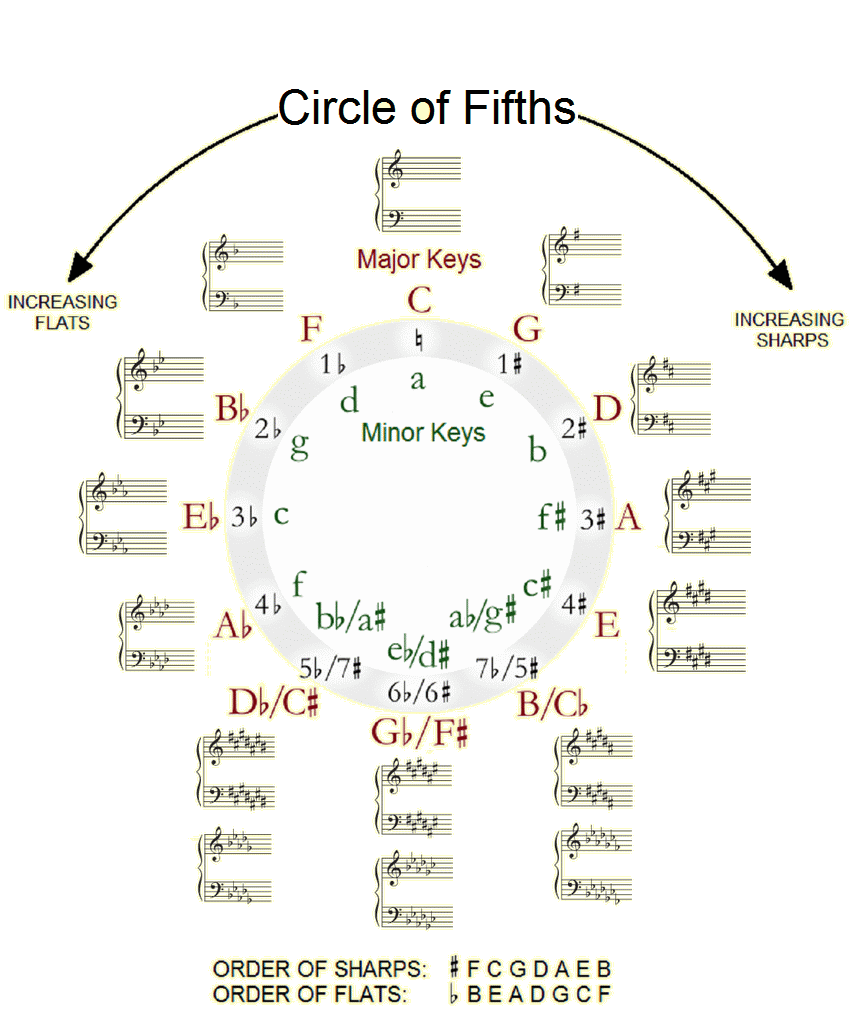


The Circle of Fifths conveys a lot of information that may not be obvious at first glance. First, it provides a quick visual guide to all 12 major and 12 minor keys. The C Major scale, which contains no sharps (♯) or flats (♭), is shown at the 12 o'clock position. As you move clockwise from C, each new key is a fifth above the last. For example, G is the fifth note of the C scale, D is the fifth note of the G scale, and so on. Starting at C and going clockwise, each new key adds one additional sharp in its major scale. (See scales and modes chart to see this more clearly.)
In a similar manner, moving counterclockwise from C, each new key is a fifth below the previous key and each key adds one additional flat to its major scale.
Notice at the 5, 6, and 7 o'clock positions, there are two keys shown, one with flats and one with sharps—B and C♭, G♭ and F♯, and D♭ and C♯ respectively. These are called enharmonic scales—they sound exactly the same because they are the same. They are named differently because the are derived by going in opposite directions around the circle.
On the inside of the circle, the natural minor scales are shown that share a key signature with the major scale. For example, C Major corresponds to A minor, and F major corresponds to F♯ minor.
One handy thing that the Circle of Fifths can be used for is to find the notes in a scale. Using C Major as an example, start at the root note of C. The second note is two steps to the right and the third note is two additional steps. This should produce C, D, and E. The fourth note will be immediately to the left of the root, in this case, F. Now continue taking two steps clockwise to find the remaining notes of the scale: F, G, A, and B. You now have the notes for the entire scale: C, D, E, F, G, A, and B. This pattern works for any of the major scales.
